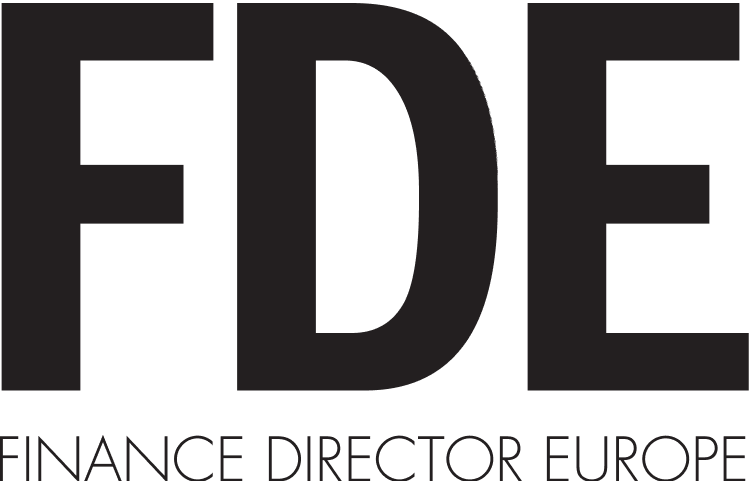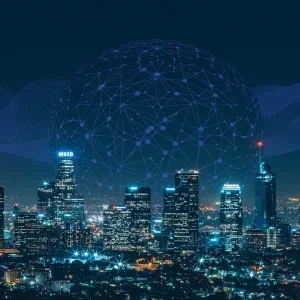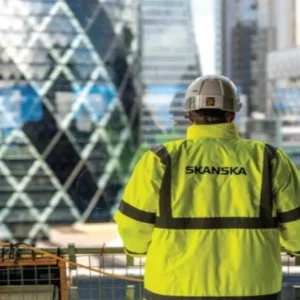
It is clear that many of the promises that have been made for the transformative impact of technology have turned out to be illusory. A combination of poor execution, bad design, uncertain leadership and muddled thinking can often lead to disappointing results. So what, after all the hard work of designing and deploying a new AR solution, should clients expect? And how can they harness the benefits of the process?
As Rash Hullait explains, as the transformation efforts move towards more sophisticated layers of finance, particularly in relation to automation, the finance function’s two primary purposes come to the fore.
“One is to regulate business results or outcomes and to look into the future in terms of where the business is going. The other angle is compliance. So those are the two branches that feed up to the CFO.”
Deep impact
Where, then, does HighRadius fit into these transformations? “Our technology has a number of fundamental areas that it impacts,” suggests Hullait. “It delivers quantitative results, particularly in areas like working capital.” HighRadius projects often involve improvements around same day auto-cash posting and higher speed of reviewing invoices, and deliver a percentage improvement in cash application hit rate.
“And suddenly, with even a small basis point movement in working capital in terms of day sales outstanding (DSO), the numbers can be significant – you could be talking hundreds of millions for large multinationals so that’s the first big outcome,” Hullait goes on to add.
Beyond that, HighRadius’ ability to increase exposure levels of transparency around processes can deliver other significant benefits. “Take, for instance, the need to understand how you interact with your customers,” Hullait explains. “From a bad debt perspective, the ability to understand the risk around your customers is hugely beneficial. So once the technology is deployed we usually see a significant reduction in bad debt exposure.”
More to the point Hullait emphasises that, particularly in CPG-type businesses, or for businesses where there is revenue linkage from disputes and deductions, automating AR solutions “allows our clients to manage those interactions and to reduce the leakages. Get that right, and you’re talking significant numbers”.
Beyond that, improved transparency in areas such as supply chain can have a significant impact on customer relationships, particularly around issues like blocked orders. “It’s hugely valuable to organisations to understand where the issues are,” Hullait says. “And, of course, automation can bring reduction in manual effort and once again we see operating expenditure reduction in staff costs, for example.”
Profound change
But while those quantitative elements are immediate and felt on the bottom line, the most successful implementations deliver a more profound qualitative impact too.
“Ultimately it’s about using technology to provide a better experience to your customers,” says Hullait, pointing out that simply winning a customer is only half of the story – how you treat them over the long term is just as important. “We have all been in that situation where you win a new client or you win a new customer and you are in the honeymoon period. But that can very quickly evaporate.
“They might have a bad experience in the on-boarding process, or through the continuing interactions that they have,” he continues. “So it’s hugely important that the tools and technology you use have a feel-good factor around them.”
And, of course, offering staff the chance to work with a more automated system can be an effective recruitment and retention tool. “For those smart young analysts coming into finance and accounting, keeping them in a role that involves lots of repetitive manual tasks is a real challenge,” Hullait adds.
“Now, though, with automated AR solutions, the technology does it all for them: it predicts who they should call, it even dials them for you on a certain day, with all the notes captured for you. Why would you not embrace that technology so you can spend your time on more value-added activities?”

A little help
Some innovations are game changing – and HighRadius believes that FREDA is just that. FREDA is a virtual assistant tool that uses AI to continuously learn based on interactions with users. By deploying machine learning (ML) and natural language processing (NLP), FREDA is able to answer over 7,000 different use-cases in credit and A/R. And, Hana Bísková explains, Freda will only get better with time.
“FREDA is there to help teams prioritise and give them insights during their daily work,” she says. “She’s not really there to do the work itself – but she is there to assist and then let’s go to create one use case.”
So far in the field, FREDA’s benefits have been mainly manifested through supplying support during customer calls. “We know that during calls, team members can be distracted just running the conversation and they don’t want to search in different screens and systems while trying to react to what the customer is saying,” notes Bísková.
FREDA’s ability to take notes of the call, and identify key words from the conversation, can then result in robust actions being taken. “If you are running the conversation, and the customer is saying ‘I will not pay an invoice because I have not received a copy’ FREDA will immediately pull the copy of the invoice and create it in the template and send it out,” says Bísková.
“She is mostly there to support, to pick the right data, show it on the screen, and consolidate the past history – which allows team members to state with clarity the past and current position. Ultimately, it ensures the conversation is data-driven and clear.”
The long view
Of course, reaping the benefits of a transformation project requires a long term view and a willingness to constantly monitor and improve. Adriana Modan- Pavel says that the best outcomes are achieved through innovative and pragmatic partnership, where both sides bring a willingness to collaborate. “On the one hand,” explains Modan-Pavel, “we have the knowledge of the product as well as a deep understanding of the client’s industry benchmarks with relevant or similar footprint or revenue. We arrive with this knowledge together with our product knowledge and we collaborate.”
In practice, that can take different forms. “Post implementation,” explains Modan-Pavel, “we often run workshops, and we also offer monthly interaction where we monitor exactly how things are going in terms of them securing value from our product. In addition, we have quarterly business reviews, we have workshops that we put together and where we define this journey.”
All the same, Modan-Pavel points out, it is important to remember that even for businesses that commit to a full digital AR transformation project, there remains the need to focus on continually improving processes and policies.
“All those things need to be carefully planned in a journey,” she says. “So, for instance, the workshops drive the direction – and then with the monthly calls we just see how we are progressing, because our tool also delivers analytics and that’s what’s helping us understand how close we are to the value that we have aligned on.”
Hullait makes a similar point, noting that deploying new technology is only worthwhile if it helps to change both internal performance and end user experience, which is something HighRadius delivers with aplomb. As he puts it: “When you look at all of that and you’re on the brink – why wouldn’t you do it?”
CASE STUDY
Sanofi
French pharmaceutical giant Sanofi is focused on the research and development, manufacturing and marketing of drugs – principally in the prescription market but also over-the-counter medication.
Over time, its receivables landscape encompassed 70 manufacturing sites with over 100,000+ employees across the world. As such, it faced a number of challenges, including multiple systems and formats with patchy automation across territories. That led to poor efficiency and a lack of clarity among teams into goal setting and end-to-end processes – resulting in a ‘dumbing down’ of the workflow.
Sanofi engaged HighRadius in order to achieve the following goals:
To develop one model for one community
- developing a single IT process to deliver uniform and standardised process overall.
To improve operational efficiency
- Sanofi wanted to streamline its processes and eliminate manual workloads through smarter automation. It also wanted a way forward while reducing its A/R overdue processing.
To increase internal customer satisfaction
- it required a system that gave them better visibility into metrics and KPIs that it needed to track.
The results
With the solution in place, Sanofi achieved great results, leveraging 85% automation in the Russian operation, and going from 0% to 60% in Hungary. It also improved on existing automation practices, boosting its French operation from 50% to 88%.
By incorporating the HighRadius Cash Application Cloud Solution, Sanofi enjoyed improved functionality, which helped it:
Auto-aggregate remittance from various sources
Remittances could be auto-extracted across various sources and formats such as check stubs, emails, EDIs, web portals – without any manual intervention. The cash app team could then view these remittances in a consolidated format in the solution.
Automate cash reconciliation and deduction coding
The solution leveraged AI capabilities to accurately auto-link payments with the open invoices and ensure automated deduction coding. This meant cash application analysts could spend more time on other high-value tasks.
Reduce lockbox keying-in fees
It leveraged multiple OCR engines to eliminate lockbox fees by auto-capturing payment and remittance data in an accurate manner.
Easily deploy, ERP-agnostic solution
The cash application cloud could seamlessly integrate with the existing ERPs across the globe without any major business disruption.






